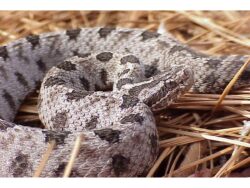Florida’s warm, diverse environment is home to many snake species. Central Florida residents often encounter these reptiles in yards, gardens, and parks. While snakes play an important role in pest control and the ecosystem, it’s helpful to know how to identify them — both for your awareness and theirs. This guide highlights common snakes in Central Florida, how to tell venomous from non-venomous species, and tips on what to do if you see one nearby.
A Guide to Common Snakes in Central Florida
Common Non-Venomous Snakes in Central Florida
Most snakes you’ll encounter in Central Florida are non-venomous. These snakes are not a threat to people and help control pests like rodents and insects.
Black Racer
Appearance: Sleek black body with a white chin
Behavior: Fast-moving, prefers to avoid interaction
Habitat: Gardens, shrubs, open areas
Corn Snake
Appearance: Reddish-orange body with blotches
Behavior: Docile and a strong climber
Habitat: Wooded areas, barns, abandoned buildings
Eastern Rat Snake
Appearance: Yellow or gray body with dark stripes
Behavior: Often climbs trees and structures
Habitat: Attics, trees, wooded neighborhoods
Garter Snake
Appearance: Slender with green, brown, or black coloring and a yellow or white stripe
Behavior: Mild-tempered and active during the day
Habitat: Near water, grassy yards, gardens
Common Venomous Snakes in Central Florida
Although less common, venomous snakes are present in Central Florida. Knowing what to look for helps you respond appropriately if you spot one.
Eastern Diamondback Rattlesnake
Appearance: Brown body with diamond patterns and a rattle
Behavior: Avoids people but may defend itself when cornered
Habitat: Pine forests, brush, and dry flatwoods
Pygmy Rattlesnake
Appearance: Small, gray body with dark blotches
Behavior: Blends well with surroundings
Habitat: Wooded areas, near water, sometimes residential
Cottonmouth (Water Moccasin)
Appearance: Thick, dark body with lighter bands and a white mouth interior
Behavior: Often stands its ground
Habitat: Swamps, streams, ponds, marshy areas
Coral Snake
Appearance: Red, black, and yellow bands (red touching yellow)
Behavior: Shy and rarely aggressive
Habitat: Forests, sandy ridges, leaf litter
What to Do if You Encounter a Snake
Whether venomous or not, treat every snake with caution and respect. Here’s how to respond:
Stay Calm and Observant
- Give the snake space — don’t try to handle it
- Avoid sudden movements and keep several feet away
- Take note of the snake’s appearance and behavior
Limit Attractants in Your Yard
- Clear leaf piles, wood, or debris that create hiding spots
- Store pet food and birdseed securely to deter rodents (snake prey)
- Trim tall grass and bushes
If a Snake Enters Your Home
- Gently guide non-venomous snakes out with a broom
- If you believe the snake may be venomous, contact a pest control professional or wildlife removal expert
Educate Kids About Snakes
- Teach children not to approach or pick up any snake
- Encourage respect for wildlife by helping them learn how snakes benefit the environment
What to Do if Bitten by a Snake
Though rare, it’s important to know what to do in the event of a snake bite.
Immediate Steps
- Call 911 or head to the nearest hospital
- Try to stay calm and still
- Keep the bite area lower than your heart
- Take a photo of the snake (from a distance) if possible
Avoid the Following
- Don’t suck out the venom
- Don’t apply ice, tourniquets, or cut the wound
Understanding the common snakes in Central Florida helps reduce fear and encourages awareness when spending time outdoors. Whether you’re gardening or hiking, knowing how to respond calmly to a snake encounter can make a big difference.
Unsure about a snake on your property? Call your local pest control professionals for expert help identifying and handling wildlife concerns.


